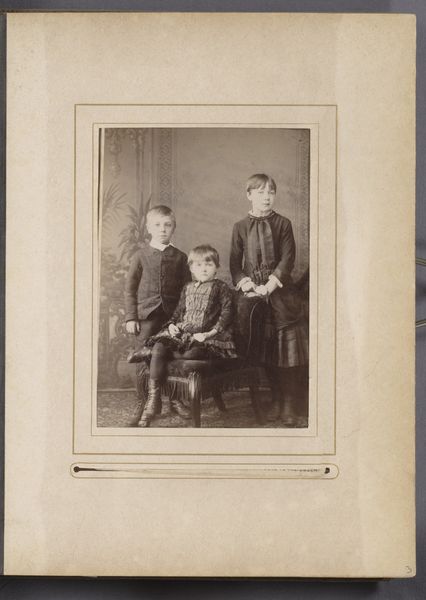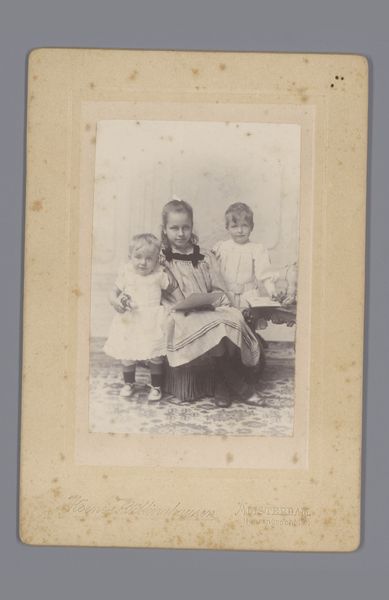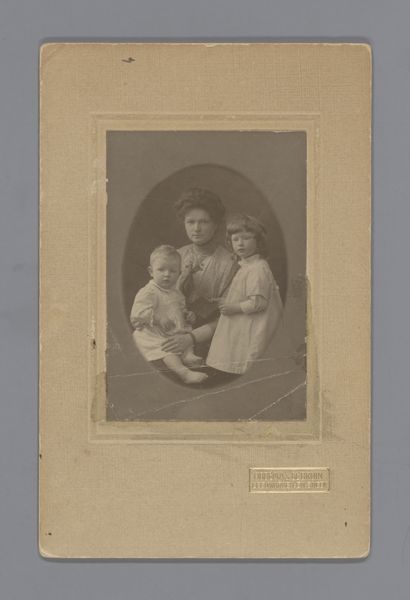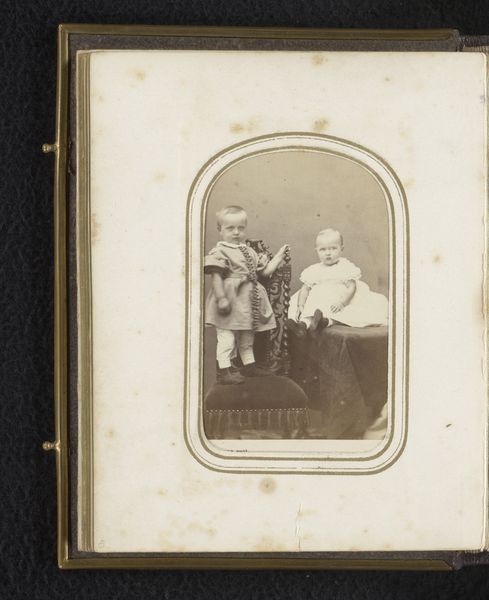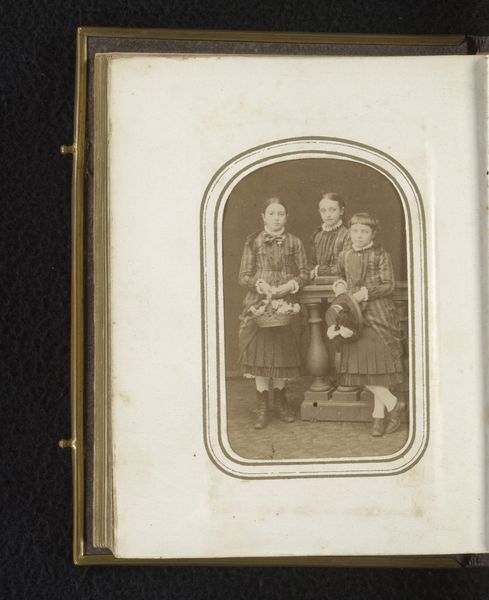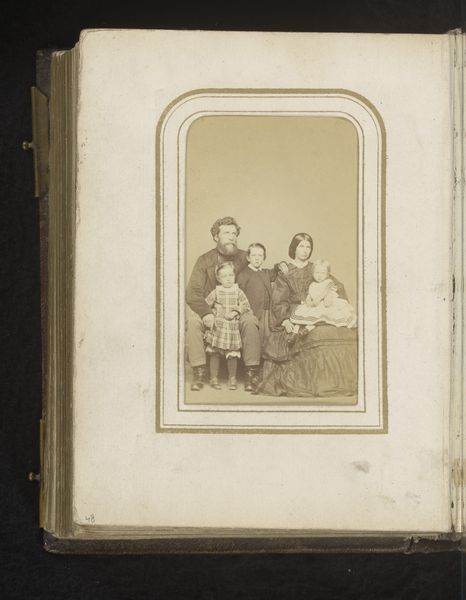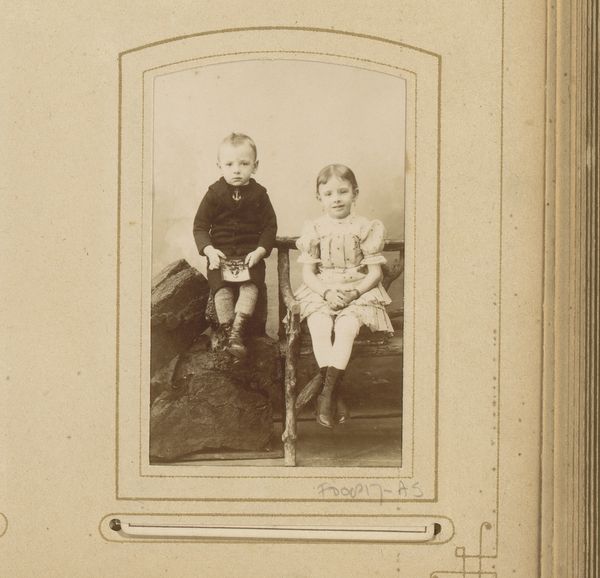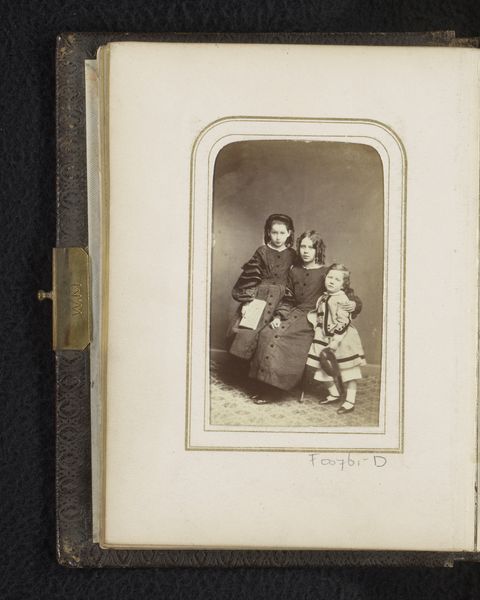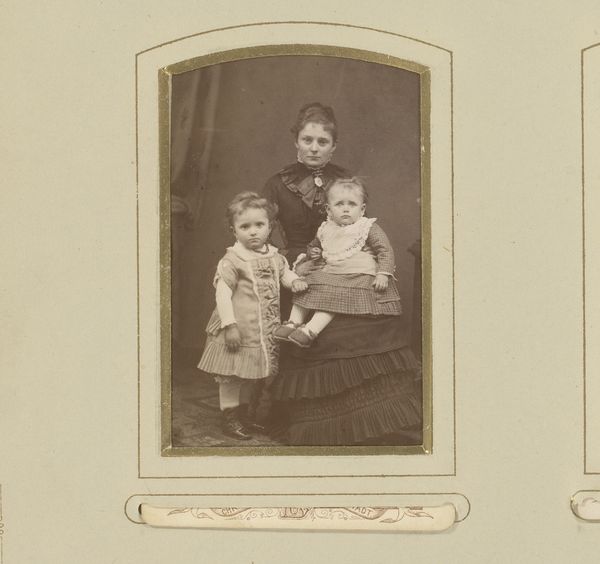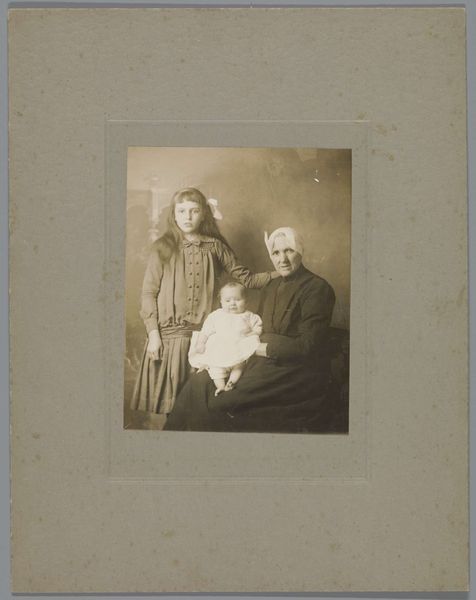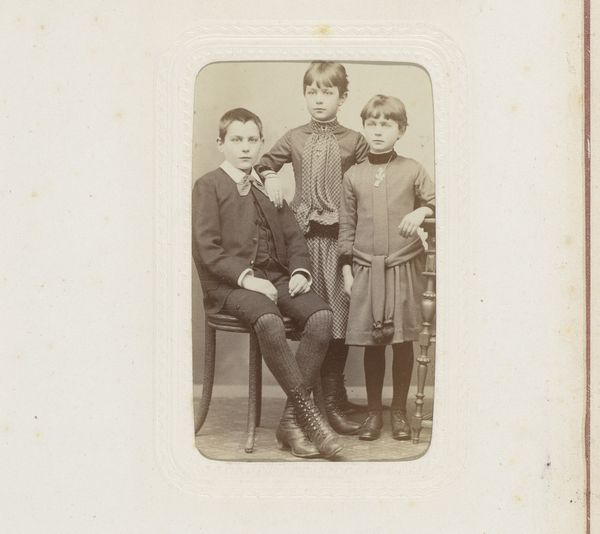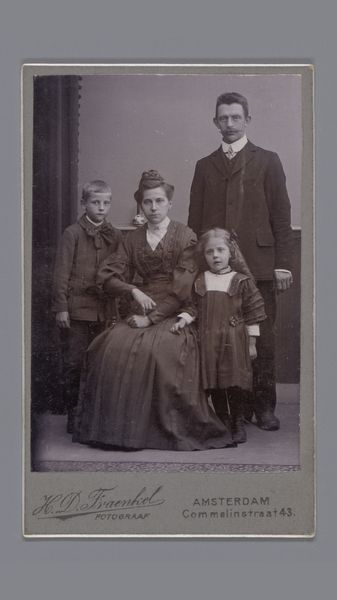
photography, gelatin-silver-print
#
portrait
#
photography
#
group-portraits
#
gelatin-silver-print
#
genre-painting
Dimensions: height 136 mm, width 97 mm
Copyright: Rijks Museum: Open Domain
Curator: This is a gelatin-silver print entitled "Groepsportret met moeder en drie kinderen," which translates to "Group Portrait with Mother and Three Children." We believe it was created sometime between 1870 and 1900. Editor: It’s quite striking, the almost mournful stillness. The gray tones emphasize the formality, but it is their placement in space that truly holds one's gaze. Curator: Yes, photography in that era was often a rather staged affair. But beyond the family dynamic captured here, the photograph presents the role of familial display within broader social constructs. How might it relate to notions of motherhood, status, and belonging during the late 19th century? Editor: If we dissect the visual arrangement, it offers a formal construct rather than a moment of life. The mother is the central figure, acting as an anchor, from where the gaze shifts across the children, noting the light reflecting softly on the baby, while each subject looks intently off-camera as though their true self is directed and positioned toward something beyond the portrait’s plane. Curator: Certainly. These photographs often served as crucial family records. In terms of circulation, a single image would be endlessly reproduced and viewed—a tool of public performance but equally a tool of intimate remembering. This is a good case of portraiture used to negotiate one’s identity. Editor: I agree. Thinking of light, and of its limited range, the photographer has balanced light and shade, ensuring all members of the family exist in near-equal amounts to elevate them. Even more specifically, notice how this contrast sculpts out a space, not just capturing light and dark, but imbuing it with spatial qualities. Curator: We need to recall this period also saw rising literacy rates, making images all the more important in conveying personal and political narratives for those unable to read. This print probably served a greater purpose, telling its beholders "we are here; we belong.” Editor: I think that, visually, the contrast between soft and defined, like how the details blur or sharpen in their dresses, subtly disrupts the portrait’s homogeneity. What emerges from it is quite lovely, making for a multi-layered viewing experience. Curator: Indeed. Through exploring both the visual form and socio-historical conditions around a family portrait, we get an intimate peek into the ways the Victorians sought to represent and perform themselves.
Comments
No comments
Be the first to comment and join the conversation on the ultimate creative platform.
